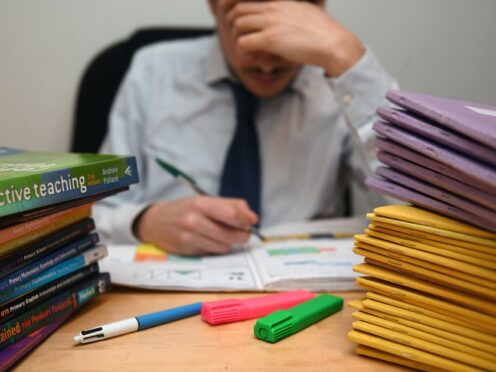
A zero-tolerance approach to violence in schools has been pledged by Scottish Labour if the party takes up government in Holyrood.
Pam Duncan-Glancy, the party’s education spokeswoman, criticised Education Secretary Jenny Gilruth’s “inaction” at tackling increasing violence by young people towards other pupils and teachers.
Figures released by Unison in December showed 67% of teachers and support staff surveyed by the union said they had encountered general verbal abuse between pupils within a week period.
Meanwhile, 59% had dealt with physical aggression and 43% had experienced physical violence between pupils in the classrooms within the same timeframe.

In her speech at the Scottish Labour conference, Ms Duncan-Glancy said: “The SNP’s distraction and inaction has led to our classrooms becoming more like pressure cookers, on the edge of boiling point, than the nurturing and safe learning environments that they should be. The result? Rising violence and poor behaviour in schools.”
Taking aim at Ms Gilruth, she said: “The Cabinet Secretary’s only answers are to come up with a five-point plan, where point one was a promise to come up with a plan and to further insult our excellent teachers by suggesting the solution is to teach them how to teach by setting up a centre for teacher excellence.
“An out of touch Government, out of ideas and out of control.”
She said Scottish Labour’s method to tackle the problem would be to equip teachers with national guidance on consequences and escalation of violence in schools.
Teachers will also have adequate debrief systems so they can know the matters they report are being dealt with.
Ms Duncan-Glancy added: “We will have a zero-tolerance approach to anything less, because friends, that’s the change we need in education.
“Pupils need to know that we want them to be safe and succeed. So we’ll encourage teachers to tell them that, empower them to set the rules of engagement in their classrooms and explain expectations of how they’ll all work together to make school safe and fun, and most importantly, places where nothing distracts from the opportunity to learn.

“Where that doesn’t happen, teachers will be equipped and backed up with national guidance on consequences and escalation, so that they have the tools and ability to manage their own spaces, will be empowered to deal with those incidents, and report them in the confidence that where necessary they will be escalated and problems resolved, we’ll do that by implementing proper debriefs for staff.”
A Scottish Government spokesperson said: “Scotland’s schools should be safe learning environments for all – violence and abusive behaviour towards pupils or staff is completely unacceptable.
“We know many countries have seen that the pandemic and the cost-of-living crisis have had a significant effect on children, young people and their families and the relationships with schools, which has been echoed in our own research.
“We have taken a range of actions, including commissioning the national research on behaviour in Scottish schools, the establishment of the headteachers taskforce, and a series of behaviour summits, which were undertaken last year to better understand these issues.
“Whilst Government can set out national parameters, arrangements for reporting are ultimately a matter for local authorities as the statutory responsibility for the delivery of education rests with them.
“That is why the Government is working with councils to bring forward a joint national action plan to set out the range of actions needed at both local and national level.”

Enjoy the convenience of having The Sunday Post delivered as a digital ePaper straight to your smartphone, tablet or computer.
Subscribe for only £5.49 a month and enjoy all the benefits of the printed paper as a digital replica.
Subscribe